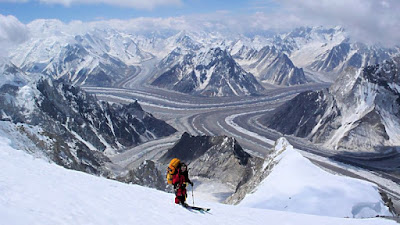(Punjabi and Urdu: مسجد وزیر خان ; Masjid Wazīr Khān)
is 17th century mosque located in the city of Lahore, capital of the Pakistani province of Punjab. The mosque was commissioned during the reign of the Mughal Emperor Shah Jahan as part of an ensemble of buildings that also included the nearby Shahi Hammam baths. Construction of Wazir Khan Mosque began in 1634 C.E., and was completed in 1641.
 Considered to be the most ornately decorated Mughal-era mosque, Wazir Khan Mosque is renowned for its intricate faience tile work known as kashi-kari, as well as its interior surfaces that are almost entirely embellished with elaborate Mughal-era frescoes.
Considered to be the most ornately decorated Mughal-era mosque, Wazir Khan Mosque is renowned for its intricate faience tile work known as kashi-kari, as well as its interior surfaces that are almost entirely embellished with elaborate Mughal-era frescoes. The mosque is located in the Walled City of Lahore along the southern side of Lahore's Shahi Guzargah, or "Royal Road," which was the traditional route traversed by Mughal nobles on their way to royal residences at the Lahore Fort.
The mosque is located in the Walled City of Lahore along the southern side of Lahore's Shahi Guzargah, or "Royal Road," which was the traditional route traversed by Mughal nobles on their way to royal residences at the Lahore Fort.
The mosque is situated approximately 260 metres west of the Delhi Gate, where the mosque's Shahi Hammam is located. The mosque also faces a town square known as Wazir Khan Chowk, and the Chitta Gate.












